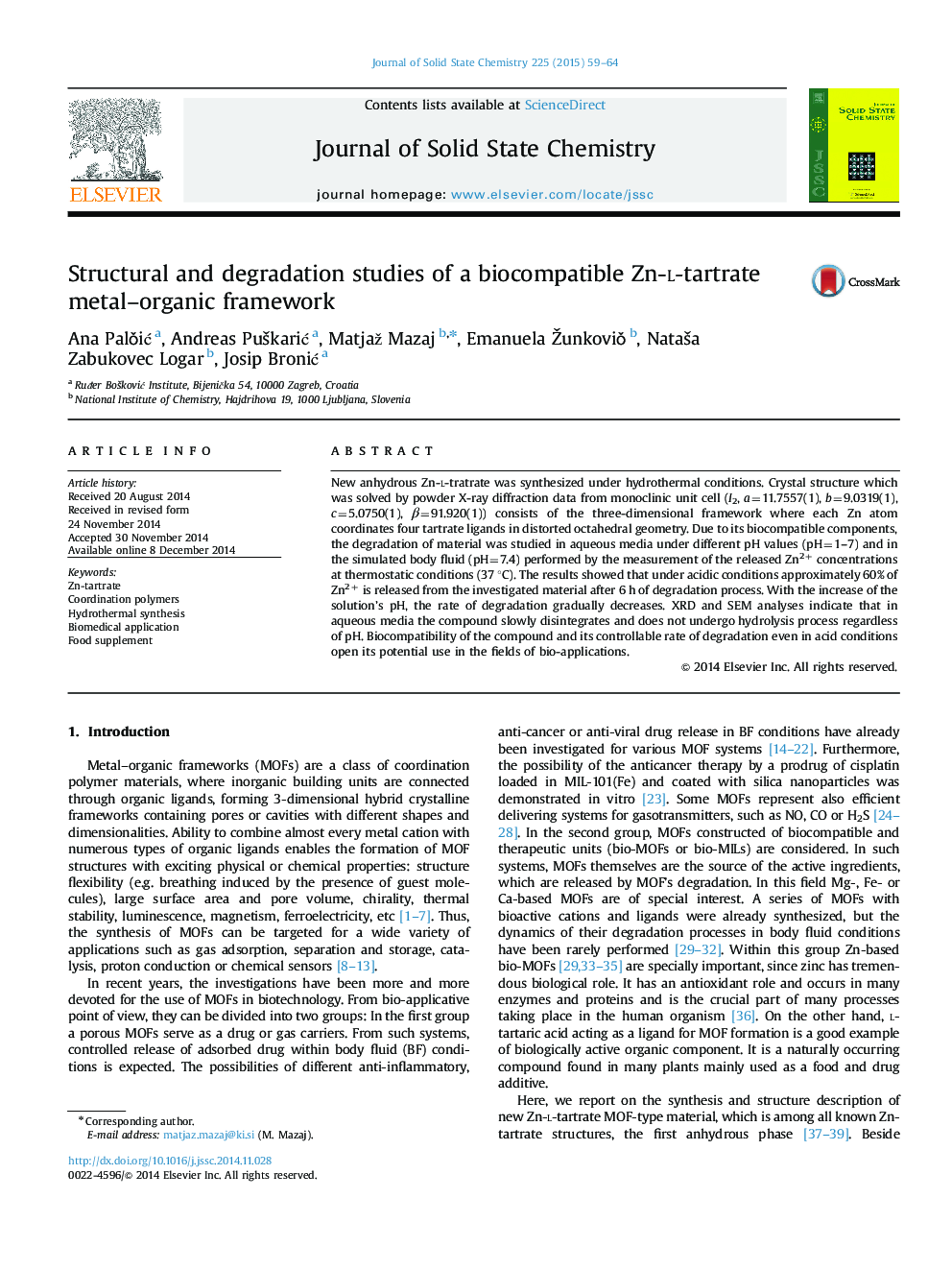| Article ID | Journal | Published Year | Pages | File Type |
|---|---|---|---|---|
| 1331600 | Journal of Solid State Chemistry | 2015 | 6 Pages |
•Anhydrous chiral Zn-l-tratrate was synthesized under hydrothermal conditions.•3-D framework consists of Zn atoms, each chelating four tartrate ligands.•Degradation of material was studied in aqueous media at different pH values.•The compound disintegrates in controllable manner in aqueous solutions.•The rate compound degradation is increasing with increased acidity of solution.
New anhydrous Zn-l-tratrate was synthesized under hydrothermal conditions. Crystal structure which was solved by powder X-ray diffraction data from monoclinic unit cell (I2, a=11.7557(1), b=9.0319(1), c=5.0750(1), β=91.920(1)) consists of the three-dimensional framework where each Zn atom coordinates four tartrate ligands in distorted octahedral geometry. Due to its biocompatible components, the degradation of material was studied in aqueous media under different pH values (pH=1–7) and in the simulated body fluid (pH=7.4) performed by the measurement of the released Zn2+ concentrations at thermostatic conditions (37 °C). The results showed that under acidic conditions approximately 60% of Zn2+ is released from the investigated material after 6 h of degradation process. With the increase of the solution’s pH, the rate of degradation gradually decreases. XRD and SEM analyses indicate that in aqueous media the compound slowly disintegrates and does not undergo hydrolysis process regardless of pH. Biocompatibility of the compound and its controllable rate of degradation even in acid conditions open its potential use in the fields of bio-applications.
Graphical abstractThe degradation kinetics of Zn-l-tar MOF material in aqueous media at different pH conditions.Figure optionsDownload full-size imageDownload as PowerPoint slide
